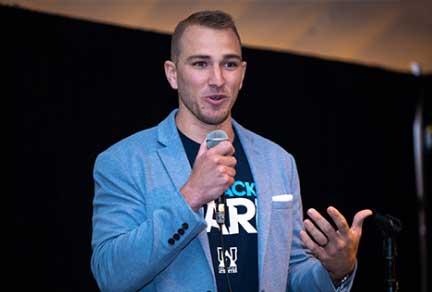Integrated clinical trial expertise mitigates risk
Precision oncology radiopharmaceuticals (RPTs) use ligands to target specific proteins on cancer cells and deliver a lethal radioactive payload. First-generation products had limited commercial uptake due to high costs, misaligned oncology referral incentives, complex manufacturing, and the fact that many non-academic oncologists were unfamiliar with the treatments. 1,2 However, RPTs are undergoing a renaissance with the development of second-generation products, especially those with a diagnostic component, called theranostics. Theranostics first diagnose and stratify patients with a radiolabelled agent that enables accurate 3D imaging of the tumor. Then, they deliver a personalized therapeutic dose of the same or a complementary radionuclide that kills cancer cells, resulting in better therapeutic outcomes with fewer off-target side effects for patients.3
The recent surge in RPT development is fueled by multiple factors, including:
Clinical and commercial success. Novartis’s two RPT theranostics—Lutathera for neuroendocrine tumors (approved in 2018) and Pluvicto for prostate cancer (approved in 2022, label expanded in 2025) generated more than $2 billion in net sales in 2024.4
Advances in isotope production. Better commercial nuclear reactors, cyclotron technology, and laser-based isotope separation have improved supply chain reliability and produced novel isotopes such as alpha-emitting radionuclides.5
Regulatory expedited programs. 2024 saw a flood of FDA Fast Track designations for sponsors of investigational RPTs, including Clarity Pharmaceuticals, Perspective Therapeutics, Telix, Abdera Therapeutics, Full-Life Technologies, and Oncoinvent.6
Multi-target potential. RPTs offer multi-target flexibility—including the choice of isotope, ligand, target, and conjugation—and synergies with existing oncology portfolios, which investors now prefer over precision medicines that target tiny subpopulations of patients.7
Discovery of new targets and antibodies. Recent advances in mass spectrometry and computational proteomics are accelerating the discovery of new cancer antigens, which can be targeted using the high specificity and affinity of novel antibodies and antibody derivatives.
Developing an RPT is operationally complex, so sponsors must manage risks at every phase of clinical development and execution. Over the past five years, Parexel has completed more than 20 RPT oncology projects for sponsors, involving more than 2,100 patients at over 600 sites in 20 countries. In this report, we present the insights of our clinical, regulatory, and operational experts into critical aspects of conducting clinical trials with RPTs8, including:
- Feasibility and site selection
- Patient-guided trial design
- Regulatory strategy
- Supply chain and logistics management
We hope you find it helpful on your journey to commercial success.
Resources:
- Nuclear Medicine and Wall Street: An Evolving Relationship, The Journal of Nuclear Medicine (September 2019).
- Market Forces Cited in Lymphoma Drugs' Disuse, The New York Times (July 14, 2007).
- Radiopharmaceuticals and their applications in medicine, Signal Transduction and Targeted Therapy (January 3, 2025).
- Novartis continues strong momentum of sales growth with margin expansion, reaches key innovation milestones in 2024, Novartis Corporate Press Release (January 31, 2025).
- The FDA does not disclose fast track designations for investigational products, and not all sponsors announce them publicly. Therefore, this is not a complete list of designations.
- Commercial Challenges of Precision Medicine in Oncology, Health Advances Blog (February 1, 2024).
- Carrier systems of radiopharmaceuticals and the application in cancer therapy, Cell Death Discovery (January 9, 2024).
- This report has been prepared for general informational purposes only. It should not be used as a substitute for obtaining legal or regulatory advice from a qualified attorney or regulatory consultant.



